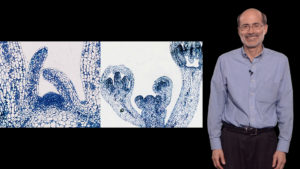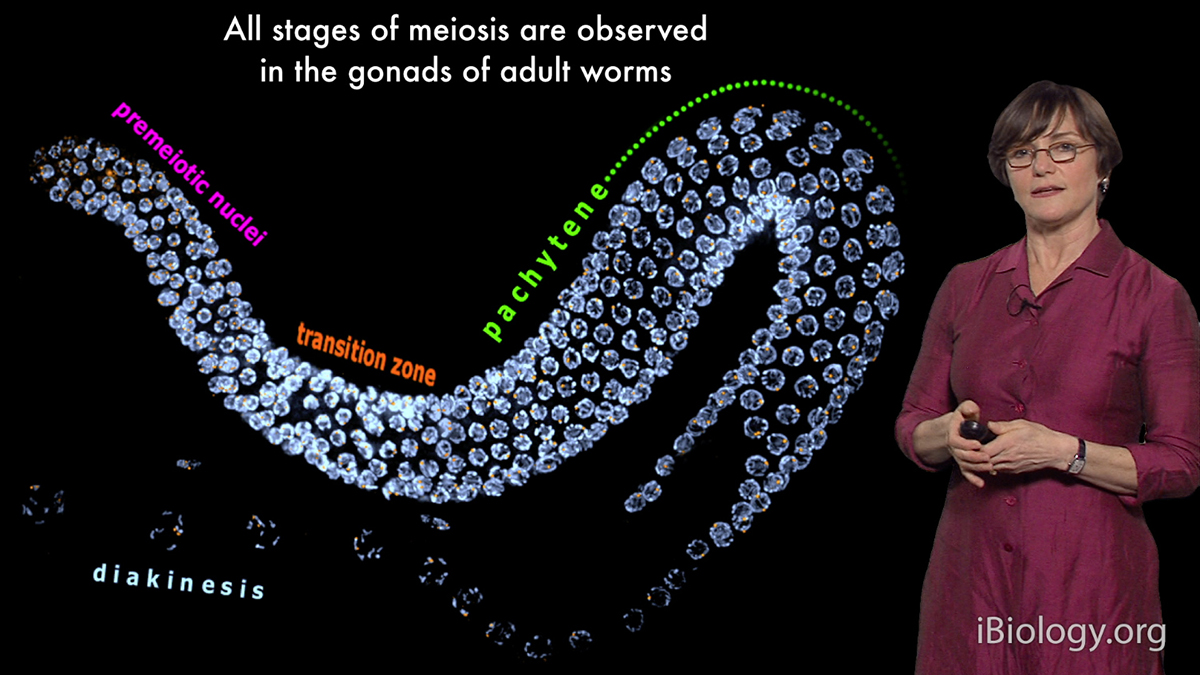Talk Overview
Plants flower in response to changes in environmental cues such as day length (photoperiodism) and temperature. Amasino explains that Arabidopsis thaliana, a common model plant, typically flowers in response to long days. There are, however, a number of mutants that either flower when days are short or don’t flower when days are long. These mutants have allowed scientists to identify a key regulator of flowering called CONSTANS. When CONSTANS is expressed in the presence of light, it triggers a cascade of protein expression and migration that ultimately results in flower formation.
In his second talk, Amasino explains that some plants germinate and begin growing in the fall but do not flower and produce seeds until spring. For these plants, a long period of cold weather (vernalization) is necessary to induce flowering. This ensures that the plant does not accidentally flower during the winter. Using Arabidopsis mutants, Amasino and his colleagues found another key protein regulator of flowering (FLC). Expression of FLC represses the photoperiodism pathway and prevents flowering. Vernalization inhibits the expression of FLC, thus removing the repression and allowing the plants to flower. Amasino also found that Arabidopis thaliana has a “memory” of winter due to modification of FLC chromatin.
Speaker Bio
Richard Amasino

Richard Amasino is a Distinguished Professor of Biochemistry at the University of Wisconsin-Madison and a Howard Hughes Medical Institute Professor. His lab uses genetics and biochemistry to study plant development and the regulation of flowering. Amasino also encourages undergraduate students to explore genetics through experiments with Brassica rapa. Amasino has been honored with numerous awards for… Continue Reading











Monzur Hossain says
Very beautiful presentation on flowering. I appreciate and express my thank Professor Richard Amasino for this lecture.